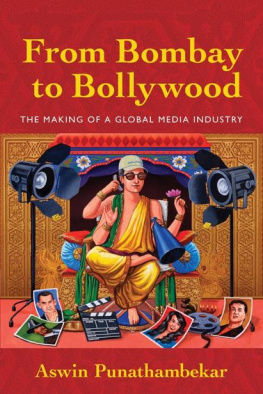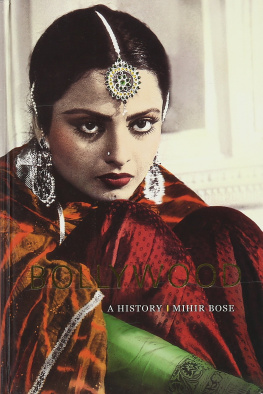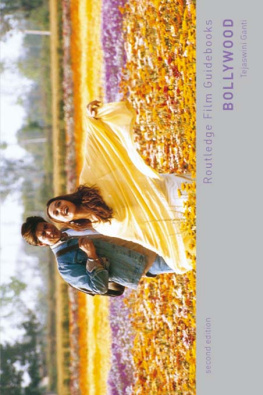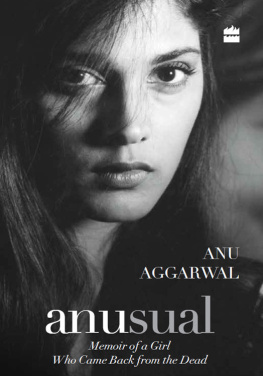Aswin Punathambekar - From Bombay to Bollywood
Here you can read online Aswin Punathambekar - From Bombay to Bollywood full text of the book (entire story) in english for free. Download pdf and epub, get meaning, cover and reviews about this ebook. year: 2013, publisher: New York University Press, genre: Politics. Description of the work, (preface) as well as reviews are available. Best literature library LitArk.com created for fans of good reading and offers a wide selection of genres:
Romance novel
Science fiction
Adventure
Detective
Science
History
Home and family
Prose
Art
Politics
Computer
Non-fiction
Religion
Business
Children
Humor
Choose a favorite category and find really read worthwhile books. Enjoy immersion in the world of imagination, feel the emotions of the characters or learn something new for yourself, make an fascinating discovery.
- Book:From Bombay to Bollywood
- Author:
- Publisher:New York University Press
- Genre:
- Year:2013
- Rating:3 / 5
- Favourites:Add to favourites
- Your mark:
- 60
- 1
- 2
- 3
- 4
- 5
From Bombay to Bollywood: summary, description and annotation
We offer to read an annotation, description, summary or preface (depends on what the author of the book "From Bombay to Bollywood" wrote himself). If you haven't found the necessary information about the book — write in the comments, we will try to find it.
From Bombay to Bollywood — read online for free the complete book (whole text) full work
Below is the text of the book, divided by pages. System saving the place of the last page read, allows you to conveniently read the book "From Bombay to Bollywood" online for free, without having to search again every time where you left off. Put a bookmark, and you can go to the page where you finished reading at any time.
Font size:
Interval:
Bookmark:
FROM BOMBAY TO BOLLYWOOD
POSTMILLENNIAL POP
General Editors: Karen Tongson and Henry Jenkins
Puro Arte: Filipinos on the Stages of Empire
Lucy Mae San Pablo Burns
Spreadable Media: Creating Value and
Meaning in a Networked Culture
Henry Jenkins, Sam Ford, and
Joshua Green
Media Franchising: Creative License and
Collaboration in the Culture Industries
Derek Johnson
Your Ad Here: The Cool Sell of Guerrilla
Marketing
Michael Serazio
Looking for Leroy: Illegible Black
Masculinities
Mark Anthony Neal
From Bombay to Bollywood: The Making
of a Global Media Industry
Aswin Punathambekar
The Making of a Global Media Industry
Aswin Punathambekar

NEW YORK UNIVERSITY PRESS
New York and London
www.nyupress.org
2013 by New York University
All rights reserved
References to Internet Websites (URLs) were accurate at the time of writing. Neither the author nor New York University Press is responsible for URLs that may have expired or changed since the manuscript was prepared.
Library of Congress Cataloging-in-Publication Data
Punathambekar, Aswin.
From Bombay to Bollywood : the making of a global media industry/
Aswin Punathambekar.
pages cm
Includes bibliographical references and index.
ISBN 978-0-8147-7189-1 (cl: alk. paper) ISBN 978-0-8147-2949-6 (pb : alk. paper)
1. Motion picture industryIndia. 2. Motion picturesIndia. I. Title.
PN1993.5.I8P86 2013
791.430954dc23 2013011871
New York University Press books are printed on acid-free paper, and their binding materials are chosen for strength and durability. We strive to use environmentally responsible suppliers and materials to the greatest extent possible in publishing our books.
Manufactured in the United States of America
c 10 9 8 7 6 5 4 3 2 1
p 10 9 8 7 6 5 4 3 2 1
For my mother,
and in fond memory of my father
This is a book about connections and networks that span multiple spaces and places in the world. Through the long process of reading, learning, and writing about transnational media spaces, the numerous material, intellectual, and emotional debts I have accrued also span many places and times.
Thanks first of all to Anandam Kavoori, whose kindness and encouragement gave me the confidence to embark on an academic career and begin the work that would lead to this book. The groundwork for this book was laid under the guidance of Henry Jenkins, William Uricchio, Michael Fischer, and Tuli Banerjee in the Comparative Media Studies program at MIT. In particular, I want to thank Henry Jenkins for his advice, unwavering support, zany humor, and showing me how to read, write, and teach with kindness and generosity. Several other teachers and friends at MIT also played a crucial role in my early years in graduate school: David Thorburn, Joe Dumit, Ken Keniston, Sangita Shresthova, Zhan Li, Stephanie Davenport, Philip Tan, Wally Banks, Alex Chisholm, Sanjit Sethi, Robin Hauck, Margaret Weigel, Anita Chan, Candis Callison, Susannah Mandel, Aparna Das, and Sajan Saini. I have also had the good fortune of staying connected with the CMS-MIT community through the Convergence Culture Consortium. Among others involved with C3, I would like to thank Sam Ford, Ivan Askwith, Ana Domb, Xiaochang Li, and Joshua Green for the many conversations about media cultures and for creating opportunities to engage with media industry professionals.
This book would not have been possible without the advice and encouragement of teachers and fellow students in the Department of Communication Arts at the University of Wisconsin-Madison. I feel very fortunate to have had a chance to learn from and work with Shanti Kumar, Julie Dacci, Michele Hilmes, Michael Curtin, Lisa Nakamura, and Mary Beltran. I would like to thank all of them for their many kindnesses, advice, and research and teaching opportunities. Most of all, I would like to thank Shanti Kumar and Michael Curtin. I could not have begun and completed this book without their encouragement, support, and inspiration over the years. I am also grateful to Hemant Shah and Kirin Narayan for many conversations on South Asia and South Asian diasporic cultures.
My colleagues in the Department of Communication Studies at the University of Michigan provided the intellectual environment as well as everyday support that made it possible to rethink and complete this book. Amanda Lotz, Robin Coleman, Susan Douglas, and Derek Vaillant have been eager mentors and I am deeply grateful to them for helping me negotiate the ups and downs of academic life. My intellectual and academic debts to Paddy Scannell are simply too numerous. I can only hope that the conversation we have been having over the past few years continues well into the future. A number of friends and colleagues at Michigan have listened, read, critiqued, and helped make this a better book. In particular, I would like to thank Dan Herbert, Sheila Murphy, Mrinalini Sinha, Ram Mahalingam, Lee Schlesinger, Matthew Hull, Rebecca Grapevine and others in the Kitabmandal group, Shazia Iftkhar, Will Glover, Farina Mir, Juan Cole, Sunil Agnani, Nadine Naber, Evelyn Alsultany, and Sean Jacobs. I am also grateful for the material support that I have received from the University of Michigan: startup research funds from the College of Literature Science and Arts, a junior faculty research grant from the Rackham Graduate School, a travel grant from the Center for International Business Education, and a publication subvention from the Office of the Vice President for Research. I am also grateful to Susan Douglas for organizing a manuscript workshop at a crucial stage, and to John Caldwell and Radhika Parameswaran for being such terrific interlocutors. Two graduate students in Communication Studies exceeded all my expectations and taught me a great deal as they helped me with various aspects of research toward this book: many thanks to Lia Wolock and Brad Jones. I should also make public my indebtednes to Shevon Desai, a wonderful librarian at Michigan who listened patiently to many a research query and pointed me in just the right directions.
At Michigan and beyond, an ever-expanding network of friends and colleagues have helped, in ways both direct and subtle, shape many of the ideas in this book: thanks to Marwan Kraidy, Sreya Mitra, Josh Jackson, Megan Ankerson, Russ Neuman, Joseph Straubhaar, Nancy Baym, Yeidy Rivero, Madhavi Mallapragada, Joseph Turow, Monroe Price, Katherine Sender, Paula Chakravarty, Sangeet Kumar, Bill Kirkpatrick, Serra Tinic, Tim Havens, Nitin Govil, Sudhir Mahadevan, Bhaskar Sarkar, Rohit Chopra, Manan Ahmed, S V Srinivas, Lawrence Liang, Ravi Sundaram, Miranda Banks, Vicki Mayer, Ranjani Mazumdar, Ratheesh Radhakrishnan, Rosie Thomas, Daya Kishan Thussu, Tarik Sabry, Zeynep Gursel, Navaneetha Mokkil-Marathur, Pavitra Sundar, Sugi Ganeshananthan, Nilanjana Bhattacharjya, Neepa Majumdar, William Mazzarella, Amit Rai, and Carolina Acosta-Alzuru.
In Bombay, New Delhi, New York, and Los Angeles, I am indebted to all those who took time away from their busy work schedules to talk to me. In particular, I would like to thank Shashank Saksena, Parmesh Shahani, Gargi Mukherjee, and Advait Shelke for inviting me into their workplaces. Thanks also to Amlu and Girish Vidyanath for their warm hospitality in Bombay. My editor Eric Zinners patience and faith in the project has meant a lot to me all along. And to Ciara McLaughlin and Alicia Nadkarni at NYU Press, whose care and diligence kept everything moving forward, thanks in no small measure.
Next pageFont size:
Interval:
Bookmark:
Similar books «From Bombay to Bollywood»
Look at similar books to From Bombay to Bollywood. We have selected literature similar in name and meaning in the hope of providing readers with more options to find new, interesting, not yet read works.
Discussion, reviews of the book From Bombay to Bollywood and just readers' own opinions. Leave your comments, write what you think about the work, its meaning or the main characters. Specify what exactly you liked and what you didn't like, and why you think so.











